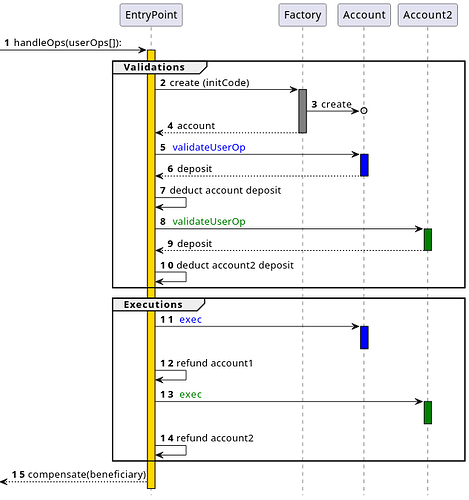Dear community,
As an experienced (aging) programmer trying to work with Ethereum, I’d like to share some disillusionment creeping in today. I feel very thankful for the people who work so hard on libraries and OS projects, though ideally I should be able to code this all myself with a smile.
I’ve previously expressed concerns about the quality of writing (and thus, also review) in EIPs, but today the content itself is the cause of my concern.
Today, I find myself particularly despondent contemplating whether Ethereum can really be the future of software in the way HTTP became the future in 1989; HyperText was fundamentally text based and extensible, and therefore a joy from day one, while Ethereum feels like a stack of workarounds that may rapidly become untenable.
Compared to the elegance and adaptability of the original web protocols, I find Ethereum esoteric and increasingly difficult to grasp, i.e. getting tougher, especially since Account Abstraction. The nature of the blockchain is challenging enough but the compounding complexity makes the system an almost vertical climb for newcomers and exhausting for experienced developers.
The core problem with Ethereum seems to be rooted in the protocol’s lack of extensibility. I wonder if the decision to use RLP for message encoding, rather than a more flexible self-describing format that can better tolerate the unknowable, has led to spiralling complications. Each EIP reads like a trick way to get around some past decision and together they resemble a tower of hacks to sniff bytes, wrap payloads within payloads and dodge bullets with binary.
Importantly, each hack necessitates burdensome code that must be added, tested and maintained in apps, and this pain drives people to centralised libraries and service providers. I think nothing of preparing and shooting off my own HTTP requests, but I’ll happily pay a service to prepare and send a transaction or user operation. This situation is the very antithesis of Ethereum’s values. It’s a more centralising force than the original web and we’ll see giant companies who’s value is pain relief.
This situation appears to stem from an extreme application of the YAGNI principle. I’m sympathetic that blockchains are severely resource constrained, but do we see this situation as permanent or will there come a time when the trade offs change and it can be reconceptualised? YAGNI is fine for private app code, but does it apply here? When designing the future of all connected software, you probably are going to need a lot of things that evade your imagination right now.
Each improvement prioritises efficiency and frugality, apparently even in its writing, and I rarely read a discussion about how the proposal can be extended or could handle some hypothetical cases. Given that we now have a good idea of just how often “we do need it”, an Extensibility section might be a prudent mandatory addition to EIPs. Another useful section would be a Realworld Integration Example which would add much needed concretion to the abstract terminology and help it all “click” for people.
Today, Ethereum’s EIP quagmire feels too much like a “high WTFs per hour” codebase where team-mates churn due to years of untackled debt which repels the very people needed to reform it. As such, I also feel a Developer Pain section might also help authors think through the impact of their improvement on everyone else. This brings me back to the selfish writing: time saved by a few authors is time stolen from many thousands of readers. That must change.
I’m curious about the community’s thoughts on balancing efficiency with extensibility in protocol design, and how Ethereum might evolve to address these challenges. As it stands, it is a slog.
I am deeply concerned that it will ultimately prove too steep and too rough going to cross the chasm unless the developer experience is radically improved, without libraries and SaaS companies.
“An important scientific innovation rarely makes its way by gradually winning over and converting its opponents: it rarely happens that Saul becomes Paul. What does happen is that its opponents gradually die out, and that the growing generation is familiarized with the ideas from the beginning: another instance of the fact that the future lies with the youth.” — Max Planck
I’ve not yet come across this in software. New ways frequently win over and convert. Software developers are insatiably curious and tend to relish learning new things. Yet with blockchain, I don’t see the excitement shared among my IRL peers. It’s eerie. I can’t tell if I’m on the bleeding edge or if it’s because no one else is coming.
I had my doubt today because I was unable to be productive. Without productivity life is stressful, I feel like a loser, lonely, and I wonder if I am making a mistake going down this path.
Then I reach the for $$$ painkillers.
Sincerely,
Luke Puplett

